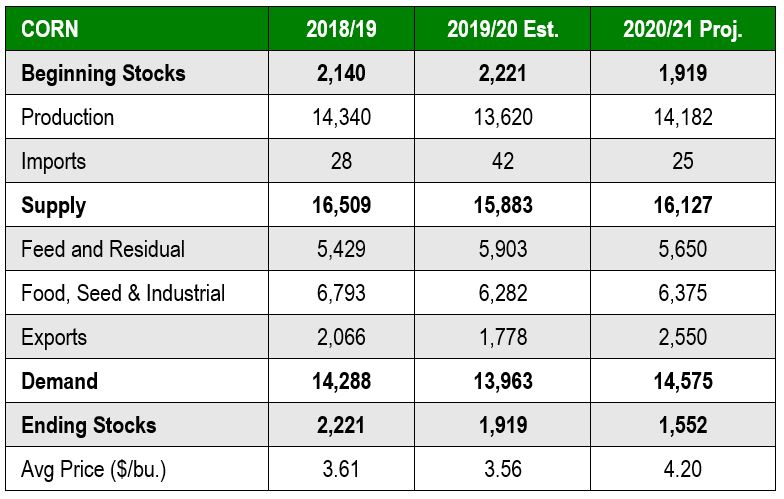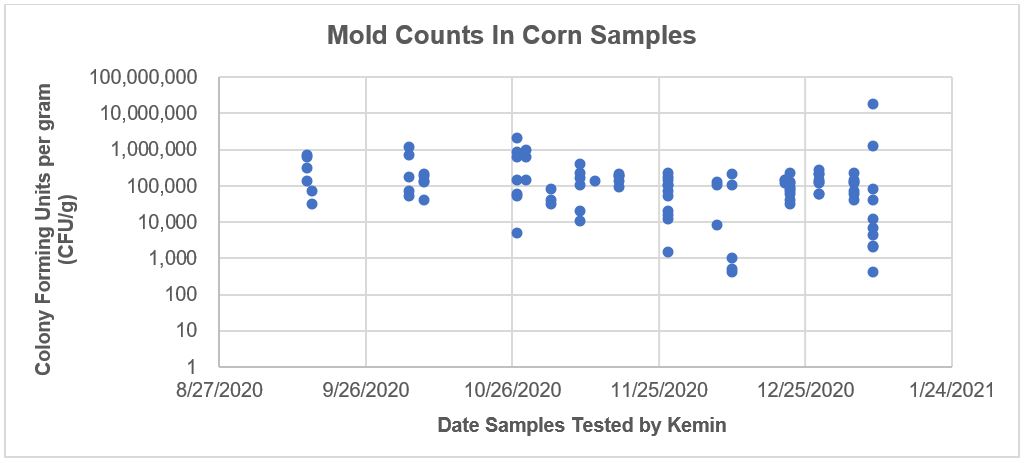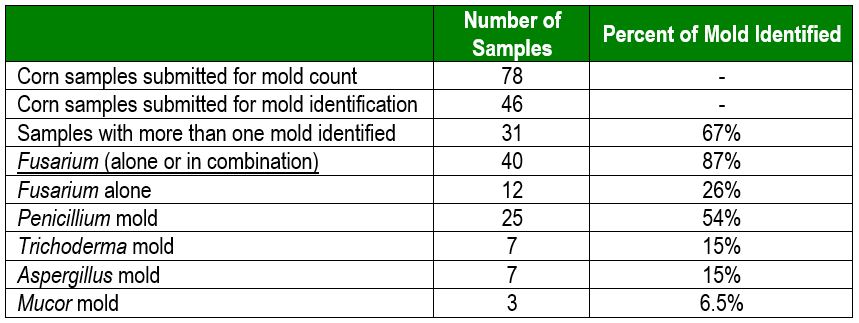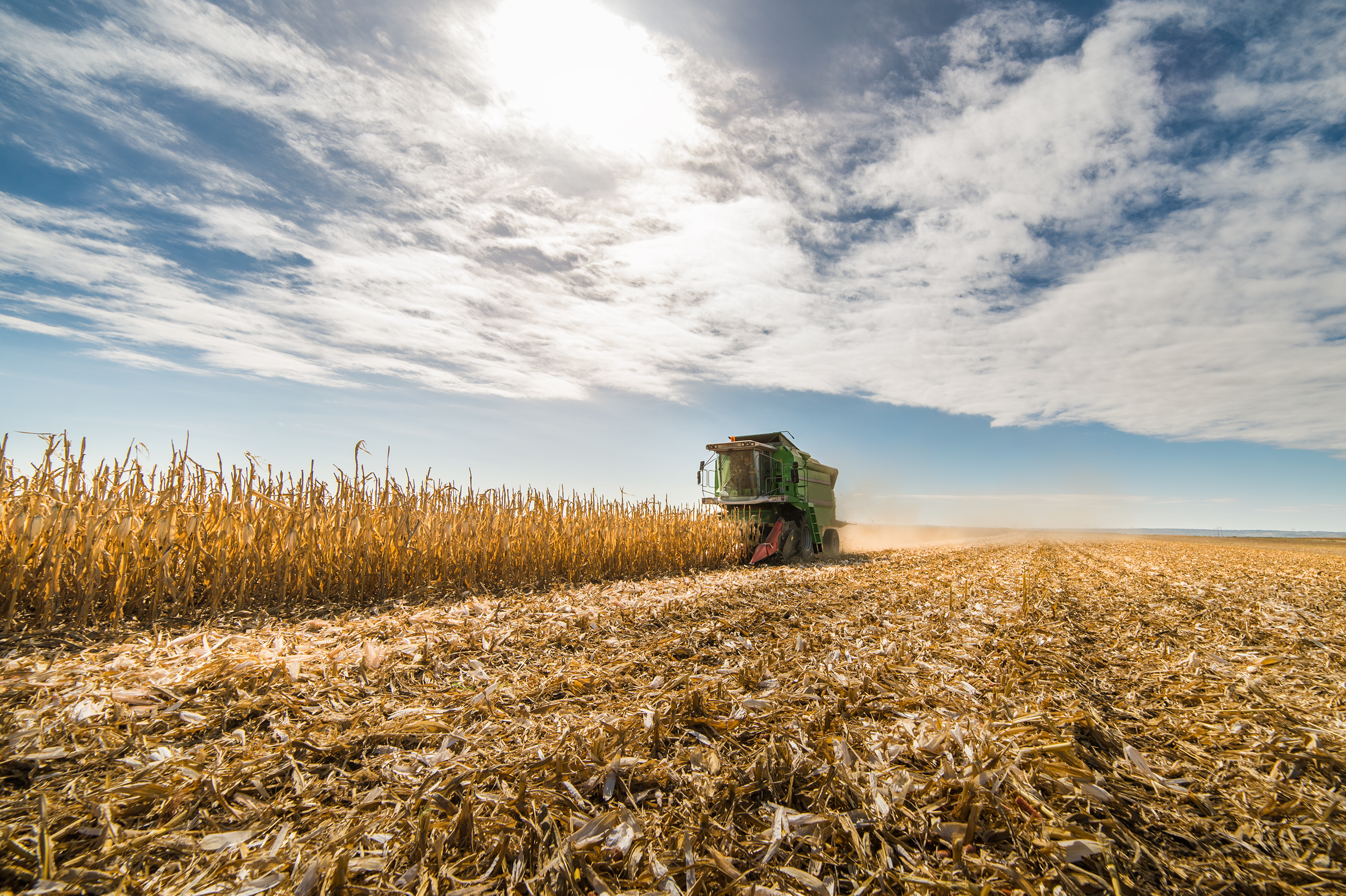Table 1. World Agricultural Supply and Demand Estimates January 12, 2021 – Million Bushels

What is Kemin finding in the 2020 corn crop?
Kemin Customer Laboratory Services (CLS) analyzes corn from all over the U.S. each year. Valuable information is gained from the samples submitted and is summarized in the report below.
Mold Levels
The corn samples submitted to Kemin for mold evaluation are similar to the mold levels found two years ago after the 2018 harvest. Corn harvested in 2020 is overall very good, but as always there are pockets of concern. Figure 1 shows the mold counts over time since harvest began in September. The average mold count in 2020/21 is 228,600 colony forming units per gram (CFU/g) compared with 577,000 CFU/g last year. Nine percent of the samples submitted have had over 1,000,000 CFU/g and 29% of the samples have over 100,000 CFU/g.
Regionally, there are some wide variations in corn quality. The chart shows a sharp up-tick in mold counts with recent samples. Immediately after harvest, Kemin samples came primarily from the upper Midwest (Iowa, Minnesota & Illinois). The later samples are from the southern corn belt (Kansas, Arkansas and Missouri). Because the growing season was cooler and wetter, there is more mold and more mycotoxin in these samples when compared with early season samples.

Figure 1. Colony forming units per gram (CFU/g) of mold found on corn samples submitted to Kemin CLS.2
Which mold species is most common in 2020?
Of the 78 samples submitted for mold evaluation, Kemin evaluated 46 corn samples for mold species. Since harvest, the most common mold found was Fusarium spp. More than one mold species was found in 67% of the corn samples submitted, and 87% of the corn samples submitted had Fusarium mold. Fusarium mold is classified as a "field mold" because it requires available water to multiply. It will often appear white to pink in color. However, the classification as a field mold does not mean it will not grow in storage. The second most common mold species, found in 54% of the corn samples submitted, was Penicillium spp. This is a storage mold and will often appear gray or greenish in color. The three mycotoxins produced by Penicillium spp. are ochratoxin, citrinin and patulin.
Table 2. Summary of mold found on corn samples submitted to Kemin CLS.2

The presence of mold in feed is not often considered an issue in livestock and poultry production, but research demonstrates the detrimental impact mold can have on performance. Research by Bartov, published in The Journal of Poultry Science in 1982, showed mold development reduced fat content from 3.9% to 2.2%.3 Research by Kao and Robinson in 1972 showed that mold growth had a dramatic effect on the nutritional content of grain and feed.4 Finally, for dairy cattle, Penn State University suggests that digestibility of moldy feed may be decreased enough to reduce energy content by 5%.5 Such feeds are also less palatable and may lower the intake of energy, dry matter and critical nutrients.
Mycotoxin Levels
Kemin CLS also evaluates corn samples for mycotoxin levels. Mycotoxins are formed by mold under certain conditions. While molds form mycotoxins, it is important to note that the presence of mold does not mean mycotoxins are present. By the same token, mycotoxins are often found when mold is no longer detected. Also, of note, once a mycotoxin is formed, it does not degrade.
Since the conclusion of the 2020 harvest, Kemin CLS has evaluated 76 corn samples for the presence of mycotoxins (Table 3). Notice that 50% of the corn samples have more than one mycotoxin. This is particularly important to note as multiple toxins can have a pronounced impact on livestock performance. Another issue with the 2020/21 corn crop is the presence of high levels of zearalenone and deoxynivalenol (DON or vomitoxin).
Of corn samples tested in the Kemin CLS Lab, 47% of the samples have detectable levels of zearalenone with an average level of 327 ppb. The United States Food and Drug Administration (FDA) has not established guidance levels for zearalenone6, however zearalenone has a chemical structure like estrogen, and can produce estrogenic responses in animals. Swine are very sensitive to zearalenone, as well as ruminants. 7
For DON, samples tested in the Kemin CLS Lab found 49% of the samples have detectable levels. The average level is 3.58 ppm. The FDA has issued guidance regarding advisory levels for DON levels for grains and grain by-products used for animal food. Depending on the species, FDA advisory levels for grain begin with 1 ppm in the total ration for swine, 5 ppm for chickens and 5 ppm for dairy cattle. Consult the FDA website for more information on the advisory levels for DON.8
Table 3. Summary of mycotoxins found on corn samples submitted to Kemin CLS.2

Kemin Recommends
First, contact your Kemin Animal Nutrition and Health – North America representative or email keminag@kemin.com for more information on implementing a comprehensive mold and mycotoxin control program. A Kemin representative in your region has specific information and expertise which will increase the effectiveness of your program.
Second, complete the following:
- Test corn for mold and mycotoxins – storage conditions greatly impact grain quality.
- With mold counts near threshold levels that can impact performance of the 2019-2020 corn supply, use Myco CURB® Dry at 2 lbs./ton or Myco CURB® Liquid at 2 lbs./ton to control mold growth in stored grain or complete feed.
- Use KALLSIL™ at 2-4 ounces/head/day in cattle or 2-4 pounds per ton of swine or poultry feed. KALLSIL is a dry anti-caking aid which helps reduce caking and improves flowability of feed ingredients. Published research has demonstrated that many anti-caking products can reduce several of the negative impacts associated with mold and mycotoxin contamination in feed.
References
1World Agricultural Supply and Demand Estimates, United States Department of Agriculture, WASDE-608, Released by the Agricultural Marketing Service on January 12, 2021. https://www.usda.gov/oce/commodity/wasde/wasde0121.pdf, accessed Jan 14, 2021.
2Data from Kemin Customer Laboratory Services corn samples submitted as part of an annual monitoring program.
3Bartov, I., N. Paster, and N. Lisher. 1982. The nutritional value of moldy grains for broiler chicks. Poultry Science. 61:2247-2254.
4Kao, C., and R. J. Robinson. 1972. Aspergillus flavus Deterioration of Grain: Its Effect on Amino Acids and Vitamins in Whole Wheat. J. Food Sci. 37:261.
5Adams, R. S. K. B. Kephart and V. A. Ishler. Mold and Mycotoxin Problems in Livestock Feeding. Department of Dairy and Animal Science, Lawrence J. Hutchinson, Department of Veterinary Science, and Gregory W. Roth, Department of Agronomy. Accessed from https://extension.psu.edu/mold-and-mycotoxin-problems-in-livestock-feeding on December 23, 2018.
6CVM Annual Report on Mycotoxins in Animal Food. https://www.fda.gov/media/130526/download, accessed January 14, 2021.
7Dairyland Labs Mycotoxin Fact Sheets. https://www.dairylandlabs.com/molds-and-mycotoxins/mycotoxin-fact-sheets. Accessed January 14, 2021.
8Guidance for Industry and FDA: Advisory Levels for Deoxynivalenol (DON) in Finished Wheat Products for Human Consumption and Grains and Grain By-Products used for Animal Feed. https://www.fda.gov/regulatory-information/search-fda-guidance-documents/guidance-industry-and-fda-advisory-levels-deoxynivalenol-don-finished-wheat-products-human. Accessed January 14, 2021.





